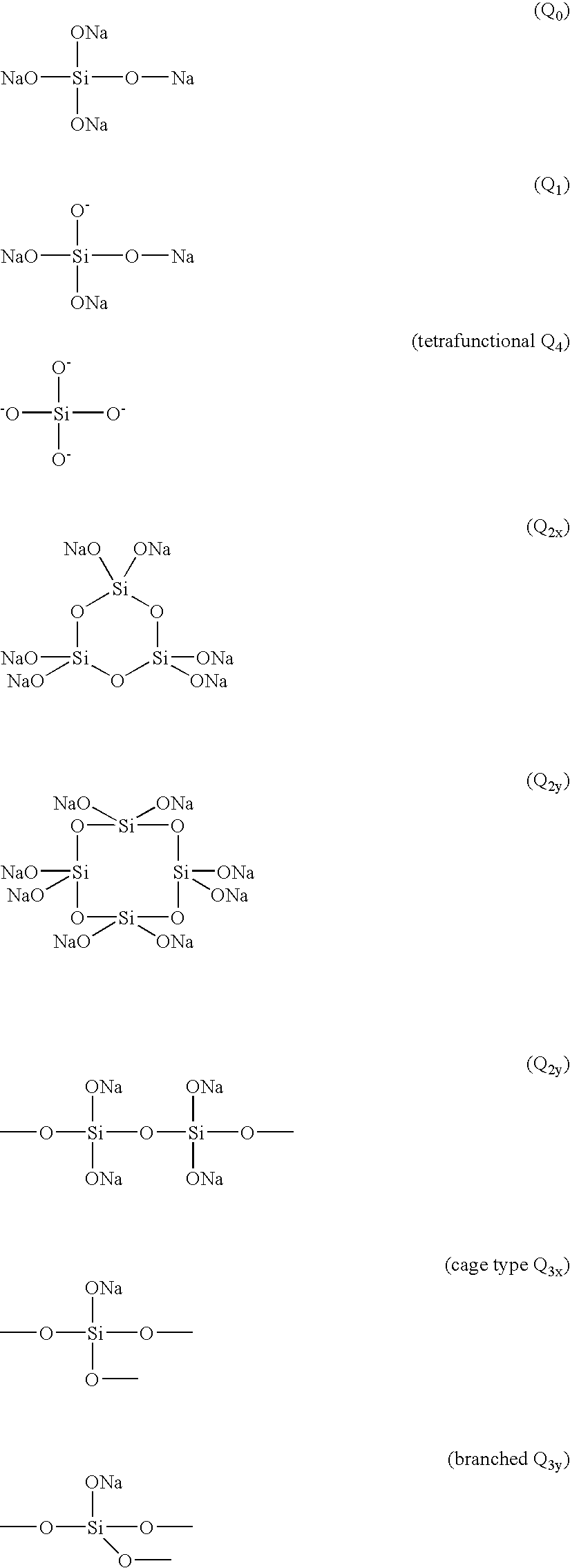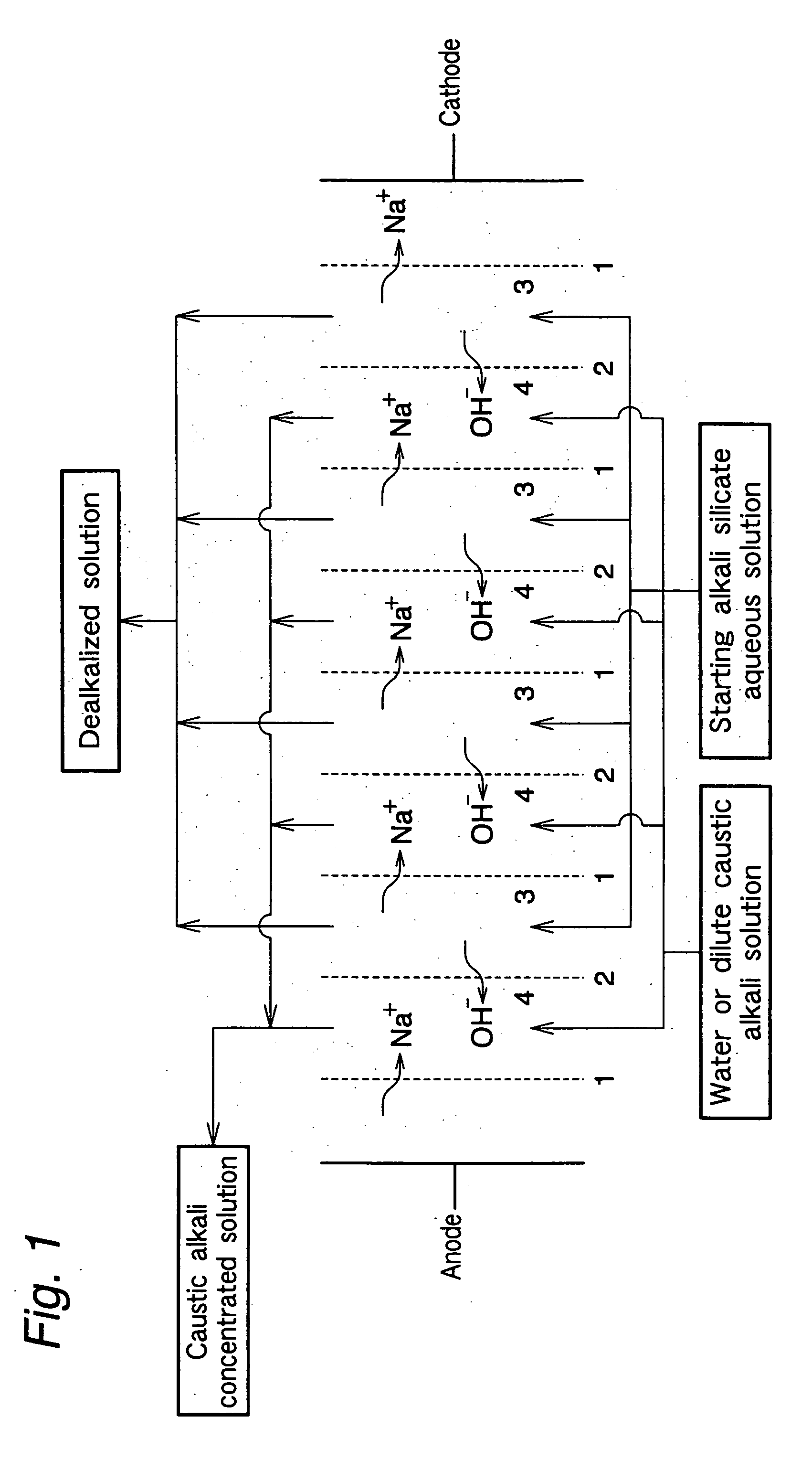Coating material composition having photocatalytic activity
a coating composition and photocatalytic technology, applied in chemical/physical process catalysts, chemical apparatus and processes, chemical/physical processes, etc., can solve the problems of poor mechanical strength of film obtained from dispersion, poor dispersibility of colloidal silica in combination with photocatalytic compound (titanium oxide), poor mechanical strength of film, etc., to achieve the effect of improving strength and adhesion
- Summary
- Abstract
- Description
- Claims
- Application Information
AI Technical Summary
Benefits of technology
Problems solved by technology
Method used
Image
Examples
production example 1
[0137] The specific gravity and the composition of the alkali silicate aqueous solution used as a starting material are as follows.
[0138] Specific gravity (15.degree. C.): 1.404
[0139] SiO.sub.2 (%): 28.12
[0140] Na.sub.2O (%): 9.21
[0141] SiO.sub.2 / Na.sub.2O (molar ratio): 3.15
[0142] The alkali silicate aqueous solution was diluted with water to obtain an alkali silicate aqueous solution having a silicic acid concentration (in terms of SiO.sub.2) of 6% by weight.
[0143] The thus-obtained starting alkali silicate aqueous solution was fed to desalting zones of such an electrodialysis device as previously specified, and a dilute caustic soda solution was fed to concentration zones of the device.
[0144] Then, electrodialysis was initiated through a constant voltage operation at 0.6 V / pair (stack voltage: 6 V / 10 pairs) and a tank (including electrode zones) voltage of 9 to 10 V. The initial conductivity was 24 mS / cm. The electrodialysis was carried out until the conductivity was lowered to l...
example 1
[0185] The sodium silicate aqueous solution, 100 parts by weight in terms of solids, produced in Production Example 1 was mixed with the components specified in Table 1. A photocatalytic coating composition was thus prepared.
[0186] A 50.times.200 mm glass substrate (TLC glass plate manufactured by Sougo Rikagaku Glass Seisakusho Co., Ltd.) was dipped into the coating composition to form a coating film on the substrate.
[0187] For the film thus produced, the strength, hydrophilicity and peel strength were evaluated as follows.
[0188] Film strength: The pencil scratch value was determined by a manual scratching method in accordance with JIS K5400.
[0189] Hydrophilicity: The coated glass substrate was left to stand in a dark place for at least 24 hours. Thereafter, the contact angle between the film and pure water was determined in the dark.
[0190] Film strength: The film was cross cut with a cutter to form one hundred 1.times.1 mm grids, over which an adhesive cellophane tape was applied....
PUM
| Property | Measurement | Unit |
|---|---|---|
| Percent by mass | aaaaa | aaaaa |
| Percent by mass | aaaaa | aaaaa |
| Electrical conductivity | aaaaa | aaaaa |
Abstract
Description
Claims
Application Information
 Login to View More
Login to View More - R&D
- Intellectual Property
- Life Sciences
- Materials
- Tech Scout
- Unparalleled Data Quality
- Higher Quality Content
- 60% Fewer Hallucinations
Browse by: Latest US Patents, China's latest patents, Technical Efficacy Thesaurus, Application Domain, Technology Topic, Popular Technical Reports.
© 2025 PatSnap. All rights reserved.Legal|Privacy policy|Modern Slavery Act Transparency Statement|Sitemap|About US| Contact US: help@patsnap.com



